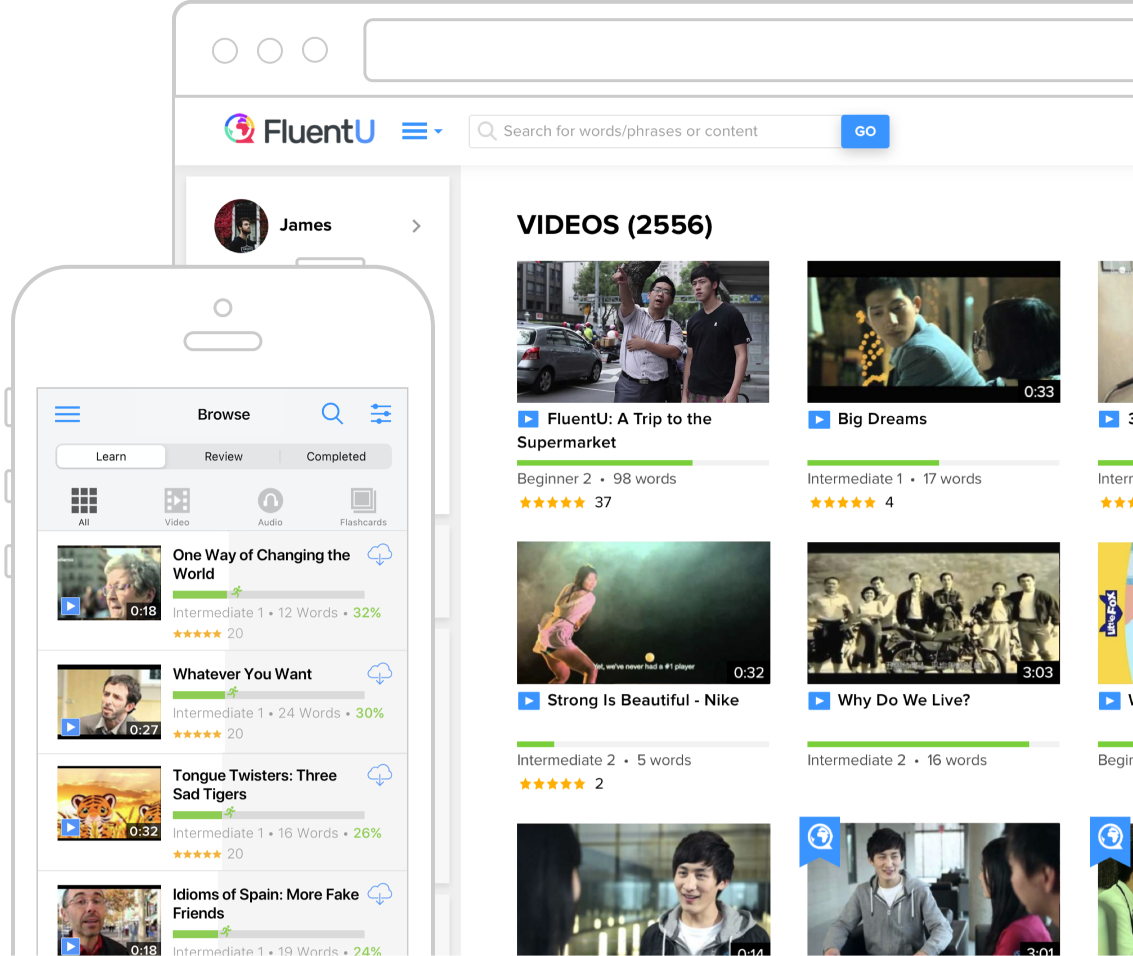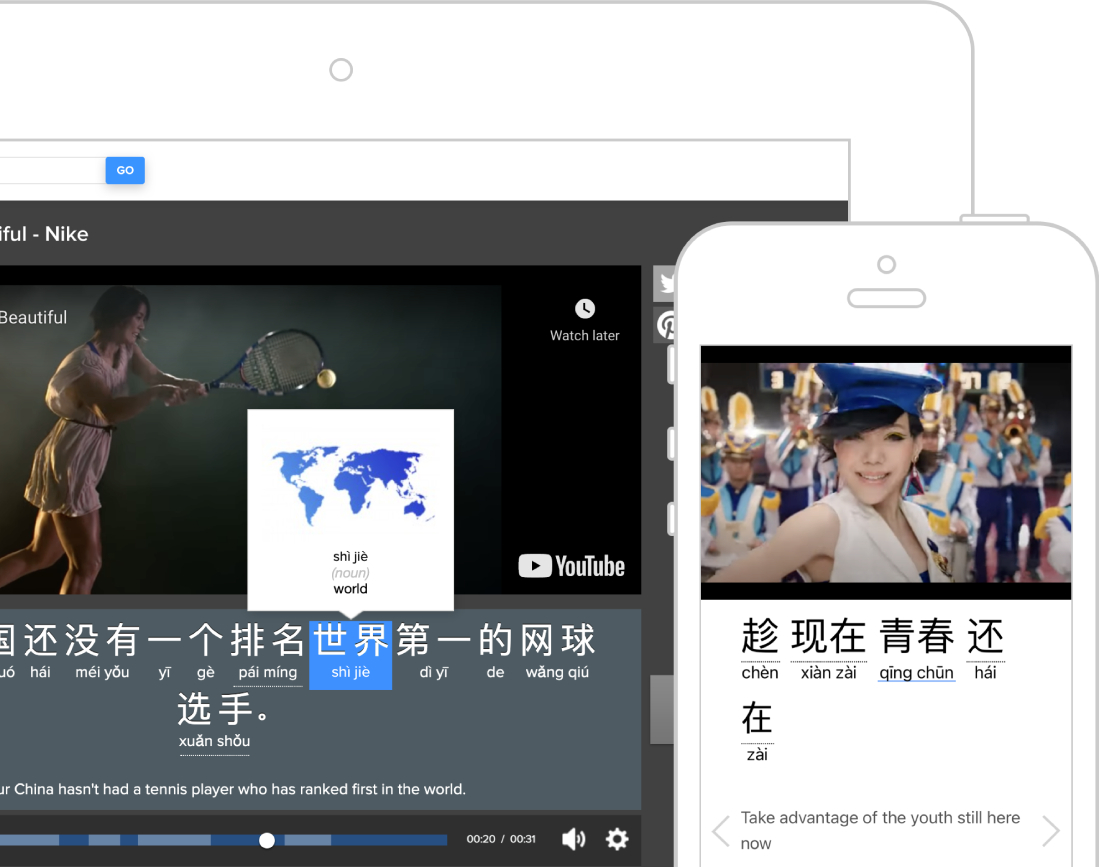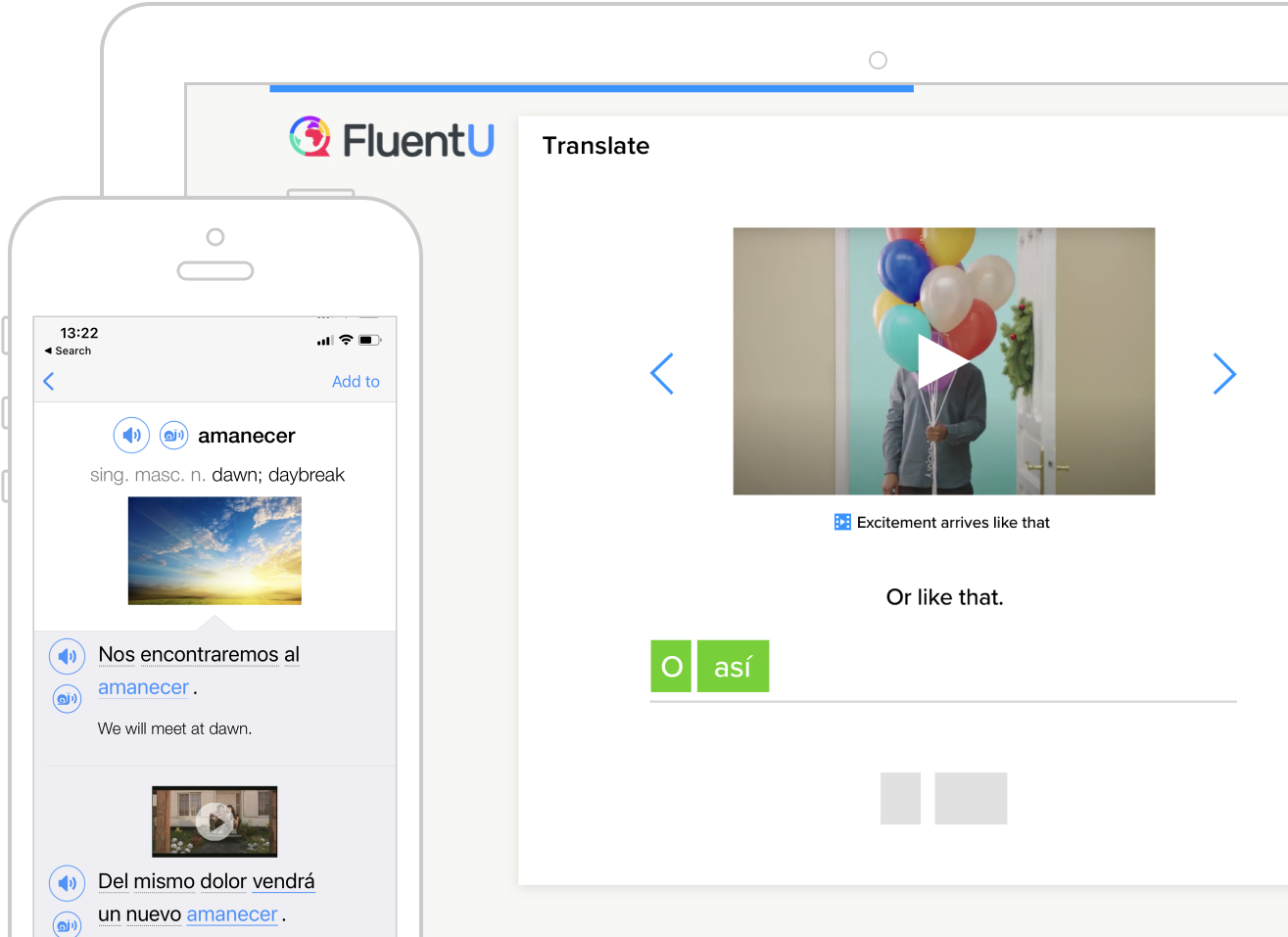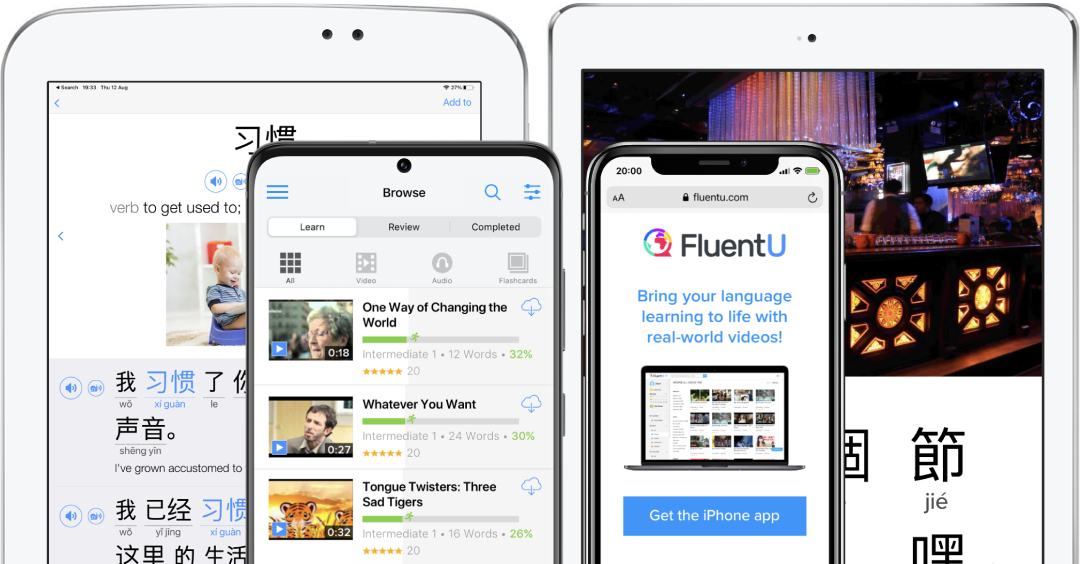How to learn Chinese with modern drama clips, movie scenes, and songs on FluentU
Immerse in a curated library of authentic Chinese videos for all levels
Authentic Chinese videos are a powerful resource for learning the language, but they're not always the easiest to dive into.
We've gathered fun and useful authentic videos for you, from popular drama clips to funny vlog segments–all categorized by level.











